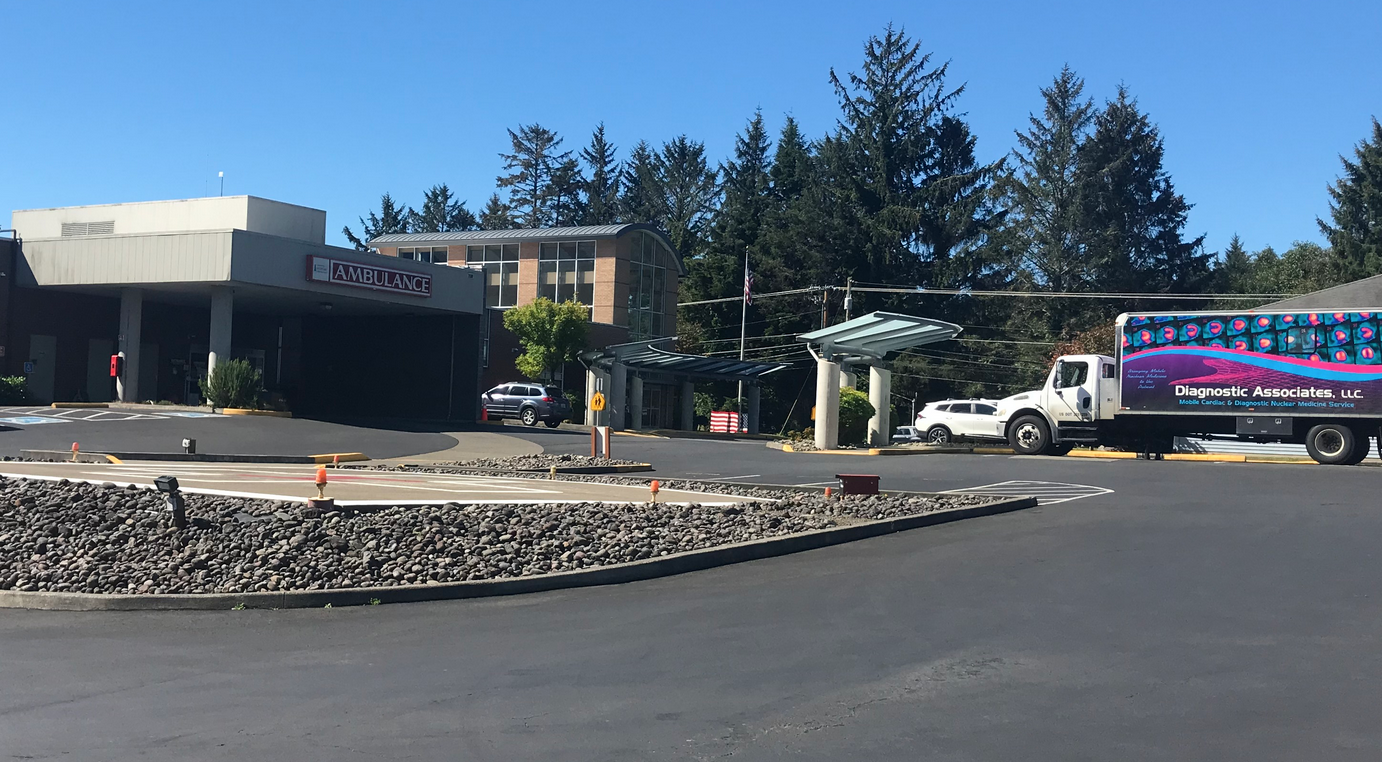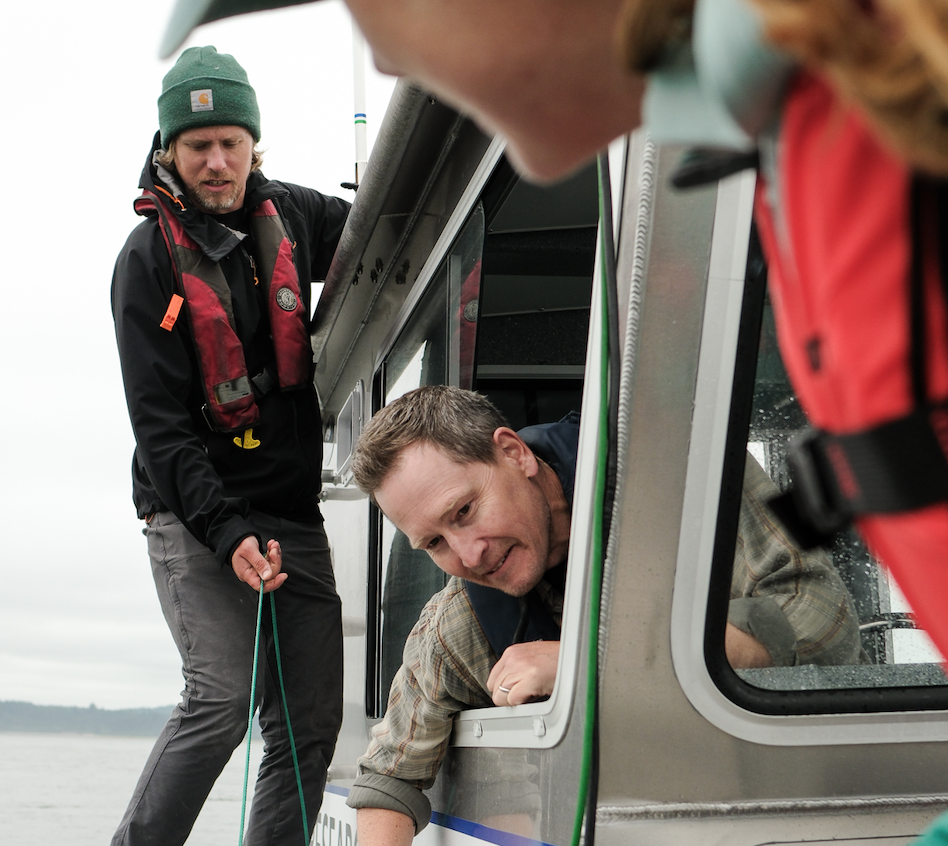Making parks pay
Published 5:00 pm Tuesday, August 2, 2005

- <I>DAMIAN MULINIX photo</I><BR>
Editor’s note: This is the first in a series that will highlight local Washington State Parks facilities.
Trending
CAPE DISAPPOINTMENT – “It’s kind of crazy,” said one visitor to Waikiki Beach at Cape Disappointment State Park while filling out a day use parking pass form. The man, looking to do some skim boarding in the surf, had some over from Vancouver for the day and was unaware of the new fees.
The $5 fee did not deter this surfer from visiting the location, or having a good time.
“It helps keep the park open, so that’s cool,” he said.
Trending
The new parking fees at Washington State Parks have caused a bit of a stir within the community since they came into effect two years ago. It has taken some a while to get used to the idea of paying to visit sites they have been frequenting, in some cases their whole lives, for free.
But in considering where State Parks might be without them, others have come to find the fees a small price to pay.
Making it countEvery parking area in the Cape Disappointment State Park has a fee, except for the lot at the Lewis and Clark Interpretive Center (LCIC) and the shuttle parking lot. The parks shuttle is free and takes people throughout the park, the beaches, LCIC and North Head lighthouse, making the circuit about every 45 minutes. This allows people to get out and explore the park without having to pay any fees.
“The shuttle is an effort to alleviate congestion,” said Cape D State Park Manager Evan Roberts. “There is very little parking [within the park]. It’s an environmentally conscious way of car pooling within the park.”
Some people have been visiting the parks under the notion that as long as they only stay for 10 minutes or less, it was okay to park without a permit. Roberts said this was never the case. He said that some of the wayside State Parks offer 10-minute restroom breaks, but only as a service, not as a way to get around paying the fees. He said this is not the case at local parks, because they are considered destinations.
The annual fee for parking at any State Park facility is $50, on a rolling 12-month calendar – if you buy a pass in August, it won’t be up until next August. There is also a $5 day parking fee option, which allows parking at all State Parks that day of purchase. The fine for failing to self-register your vehicle is $128.
“That administrative code was established before the fee was in affect,” Roberts said of the high differential between the fine and the cost of a day pass.
Roberts suggested that people stop at the park office when entering Cape D, or if visiting while the office is closed or a park that has no office, to simply use the self-registration booths at the parking lots.
In terms of enforcing permits, Roberts said they have staff who do random patrols of the sites throughout the Peninsula, throughout the day. Roberts said they don’t give out tickets to everyone without a permit, rather taking it on a case-by-case basis. But they are cracking down a bit.
“I think when it was newer we were probably more lenient,” he said. “Since then, we’ve added adequate signage, it’s hard to miss it. We believe people are familiar with the fee.”
And though there have certainly been people who have groused about the parking fees publicly, all-in-all Roberts said he thinks they have received a lot of support from the local community.
“People understand the need for the fees, without user fees the parks would not be viable,” he said. “It costs money to run a park and we appreciate people’s understanding that it costs money to offer this service. User fees are very common in parks. I believe most states have a day fee, most National Parks have an entrance fee.”
He said it has been suggested to him that they should wave the fee for local residents, which he said really wouldn’t be possible.
“Not only would we be asking for verification that people are residents, but where do you draw the line?” he asked, referencing where a cut-off line would be for such a waver, noting that some people would inevitably be left out.
“It would be far too complicated, there’d be no way to do it when you understand that we have 125 state parks, and lots of residents in the vicinity of those parks.”
Roberts said that State Parks does wave the fees for low-income families, disabled veterans and limited income seniors, but people must request a waver from the State Parks office in Olympia, something he said local rangers would be happy to help people get that process underway.
Why fees?Washington State Parks receives 60 percent of its annual funding from the state legislature, the other 40 percent is up to the parks themselves to fill-out. Things like fees and rental costs make up that gap.
“Camping fee revenues would definitely be our biggest source of income,” said Roberts, who noted that mostly comes with the summertime boom between July and September.
State Parks also owns and operates vacation rentals at Ft. Columbia and the lightkeepers house at North Head Lighthouse. Both historic structures have been rehabilitated and are available to the public at a cost of $150 to $350 a night. This cost diminishes by 50 percent in the off-season, making them affordable for the stormy season. All the lodgings at the light keepers house are three bedrooms, with full kitchen and bath. At Ft. Columbia, of the two lodgings available, one is smaller with only two bedrooms, while the second is twice the size with four bedrooms. Also at Ft. Columbia is the refurbished theater building, which is available for rent at a rate of $250 a day.
Another source of income on the Peninsula is lease agreements they have with a couple of business. State Parks owns the land which is home to the Surfside Golf Course and the Ft. Canby Store. Personal donations are also a vital income source.
“It varies from year to year,” said Roberts. “In the last 10 years we’ve had donations as large as $5,000 or as minor as a $1.”
Closures avertedRoberts reminds that it wasn’t that long ago that State Parks was faced with having to close some of its facilities due to failure to procure the necessary funds, but he said that now they are making up that needed 40 percent.
And though you might think that additional funding may be coming their way thanks to the new National Park designation at Cape D, you’d be mistaken. But Roberts said that they are seeing some major capitol improvements that will continue over the next five to seven years. These are coming due to the recent upgrade to “premier destination” status by State Parks. In the next year alone they will see the arrival of the Maya Linn Confluence Project, new boat ramps, two new restrooms and the new amphitheater, as well as some improvements to the exterior of the LCIC.
Currently, State Parks has a maintenance backlog of $300 million throughout the state. So far, Roberts said that funds have been used locally for painting the historical buildings at Ft. Columbia and putting new roofs on several buildings at Cape D, among other things.
For more information about fees at State Parks facilities, or to inquire about visiting on the sites, call 642-3078.









